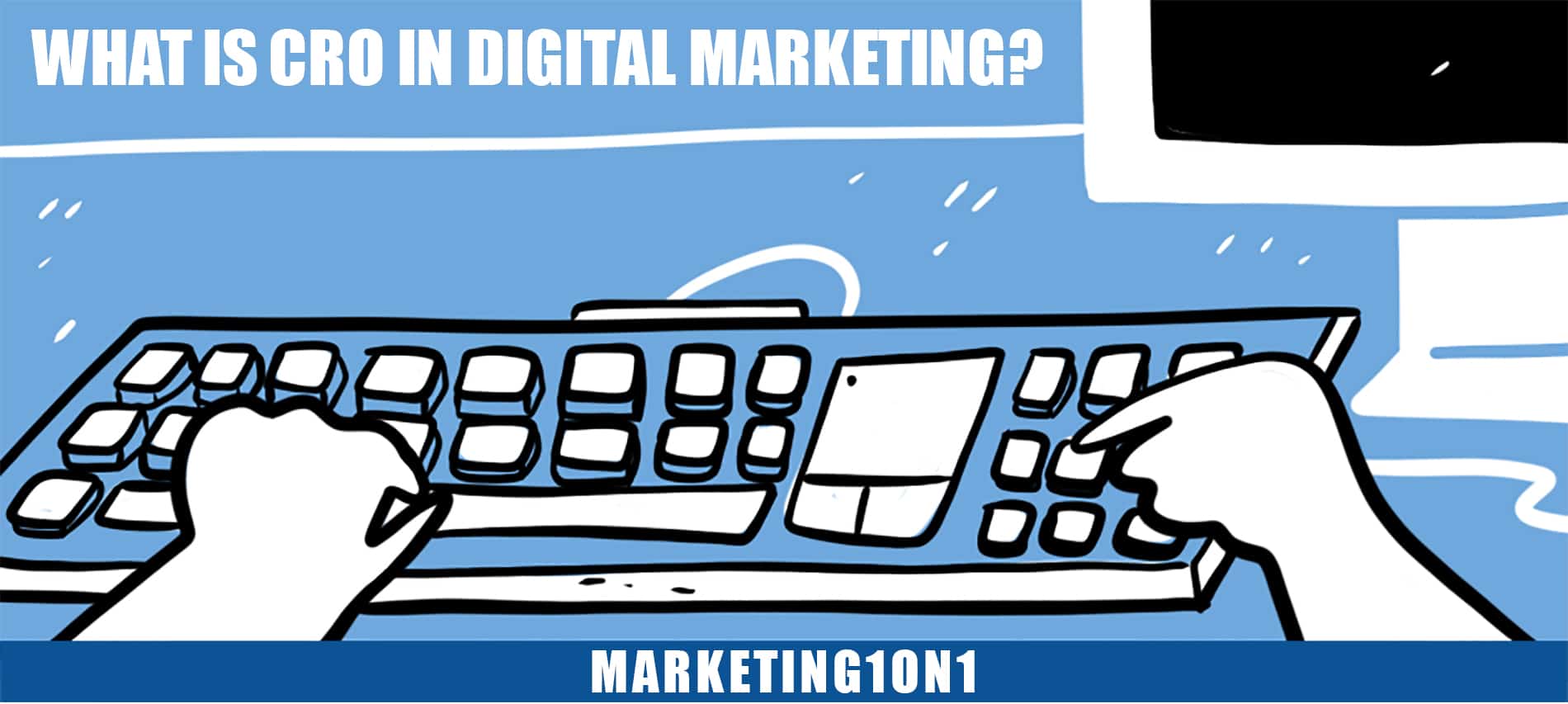- HOME
- CHECKOUT / CART
- LOGIN / REGISTER
- LINK BUILDING
- SEO
- OTHER SERVICES
- RESOURCES
- ABOUT
- About Us
- Why Us
- Testimonials
- INDUSTRIES
- Cannabis CBD Marketing and SEO
- Carpet Cleaning Marketing and SEO
- Cell Phone Repair Marketing and SEO
- Dental Marketing and SEO
- Drug Rehab Treatment Centers Marketing and SEO
- HVAC Marketing and SEO
- Junk Removal Marketing and SEO
- Law Firm Marketing and SEO
- Law Firm Website Design
- Medical and Healthcare Marketing
- Plastic Surgeons Marketing and SEO
- Plumbing Marketing and SEO
- Private Detectives / Investigators Marketing and SEO
- SaaS Marketing and SEO
- CONTACT
What is CRO in digital marketing? |

What is CRO in digital marketing?
CRO, or Conversion Rate Optimization, is the process of improving the percentage of visitors to your website who take a desired action. This could be anything from subscribing to your newsletter to making a purchase. When done correctly, CRO can be a powerful tool in your digital marketing arsenal.
What is CRO?
CRO is short for conversion rate optimization, and it’s a process of improving the percentage of visitors to your website who take a desired action. This could be anything from signing up for a newsletter to making a purchase.
There are a number of different techniques that can be used to improve your website’s conversion rate, and it’s important to test different tactics to see what works best for your specific situation. However, some common CRO strategies include optimizing your website for usability, creating targeted landing pages, and using persuasive copywriting.
If you’re looking to improve your website’s performance, CRO is a great place to start. By increasing your conversion rate, you’ll be able to get more leads and sales from your existing traffic.
What are the benefits of CRO?
There are many benefits of CRO or Conversion Rate Optimization. By definition, CRO is the practice of improving the conversion rate of a website or landing page. In other words, it is the process of optimizing a website or landing page to increase the percentage of visitors who take the desired action, such as making a purchase, signing up for a newsletter, or filling out a contact form.
There are numerous benefits of CRO, including:
1. Increasing website revenue – One of the most obvious benefits of CRO is that it can increase website revenue. This is because if more visitors are converted into customers, more money will come into the business.
2. Decreasing customer acquisition costs – Another benefit of CRO is that it can help to decrease customer acquisition costs. This is because if a higher percentage of visitors are converting into customers, then less money needs to be spent on acquiring new customers.
3. Improving website usability – CRO can also improve website usability since the goal is to make it as easy as possible for visitors to take the desired action. If a website is easy to use and navigate, then more people are likely to stay on the website and convert into actual customers.
How can CRO be implemented in digital marketing?
CRO or Conversion Rate Optimization can be implemented in several ways in digital marketing to improve the conversion rate of a website or landing page. A few common methods include:
1. A/B Testing – This involves creating two versions of a web page or email campaign and testing which performs better in terms of conversion rate.
2. Landing Page Optimization – This involves making changes to a landing page’s design and/or copy to improve its conversion rate.
3. Use of Pop-ups and Lead Magnets – Pop-ups or lead magnets (such as free eBooks or white papers) can effectively increase conversions by getting visitors to take action.
4. Use of Retargeting – Retargeting ads are shown to people who have already visited your website but didn’t convert. By showing them relevant ads, you can bring them back to your site and increase the chance they’ll convert.
5. Personalization – Personalizing content and offers based on user data can effectively increase conversion rates.
What are some common CRO mistakes?
There are a few common CRO mistakes that can trip up even the most experienced digital marketers. Here are a few to watch out for:
1. Not Defining Your Goals
Before you can start optimizing your website or landing pages, you need to know what you want to achieve. Are you looking to increase conversions, reduce bounce rates, or something else entirely? Without a clear goal, it will be difficult to measure your success and identify areas for improvement.
2. Failing to Test
A/B testing is essential to CRO, yet many marketers fail to do it. If you’re not testing different versions of your website or landing pages, you’ll never know which one performs best. As a result, you could be leaving money on the table by not implementing the winning variation.
3. Ignoring User Feedback
Your website visitors are a valuable source of information about your site’s usability and effectiveness. If you’re not paying attention to user feedback, you could be missing out on important insights that could help improve your conversion rate.
How to measure the success of a CRO campaign
Digital marketing is about driving traffic to your website and converting that traffic into leads or customers. But how do you know if your digital marketing efforts are paying off? That’s where Conversion Rate Optimization (CRO) comes in.
CRO is the process of optimizing your website and digital marketing campaigns to increase the percentage of visitors who take the desired action, such as filling out a form or making a purchase. In other words, CRO is all about improving the effectiveness of your digital marketing campaigns.
There are several ways to measure the success of a CRO campaign. One common metric is conversion rate, which is the percentage of visitors who take the desired action. Another common metric is the cost per acquisition (CPA), which is the amount you spend on a digital marketing campaign divided by the number of customers you acquire through that campaign.
Both conversion rate and CPA are important metrics to track, but they only give you part of the story. To really gauge the effectiveness of your CRO campaign, you need to look at a number of different metrics, including:
Website traffic
Bounce rate
Time on site
Pages per visit
New vs. returning
Conclusion
CRO is a process of using data and user feedback to improve the performance of your website or digital marketing campaign. By constantly testing and tweaking your website or campaigns, you can improve your conversion rate and ROI. If you’re not sure where to start with CRO, we suggest hiring a specialist or using one of the many CRO tools on the market.
Our locations and Services:
Find us on Google maps for directions: Digital Marketing | SEO Las Vegas, Digital Marketing | SEO New York, Digital Marketing | SEO Phoenix, Digital Marketing | SEO Houston, Digital Marketing | SEO Atlanta, Digital Marketing | SEO Anaheim, Digital Marketing | SEO Alexandria, Digital Marketing | SEO Austin, Digital Marketing | SEO Calabasas, Digital Marketing | SEO Cleveland, Digital Marketing | SEO Corpus Christi, Digital Marketing | SEO Dayton, Digital Marketing | SEO Detroit,Digital Marketing | SEO Fort Worth, Digital Marketing | SEO Henderson, Digital Marketing | SEO Indianapolis, Digital Marketing | SEO Irvine, Digital Marketing | SEO Jersey City, Digital Marketing | SEO Knoxville, Digital Marketing | SEO Long Beach, Digital Marketing | SEO Los Angeles, Digital Marketing | SEO Medford, Digital Marketing | SEO Mesa, Digital Marketing | SEO New Orleans, Digital Marketing | SEO Palmdale, Digital Marketing | SEO San Jose, Digital Marketing | SEO Santa Clarita, Digital Marketing | SEO Santa Monica, Digital Marketing | SEO Scottsdale, Digital Marketing | SEO Sherman Oaks, Digital Marketing | SEO Seattle, Digital Marketing | SEO Tacoma, Digital Marketing | SEO Torrance

By placing an order, signing up for services from Marketing1on1 LLC or using this website you agree to Terms and Conditions and Privacy Policy
Copyright © Marketing1on1 LLC All rights reserved.
The content of this web site may not be copied, replaced, distributed, published, displayed, modified, or transferred in any form or by any means except with the prior permission of Marketing1on1 LLC.
Copyright infringement is a violation of federal law subject to criminal and civil penalties.
Blog | Accessibility Statement




